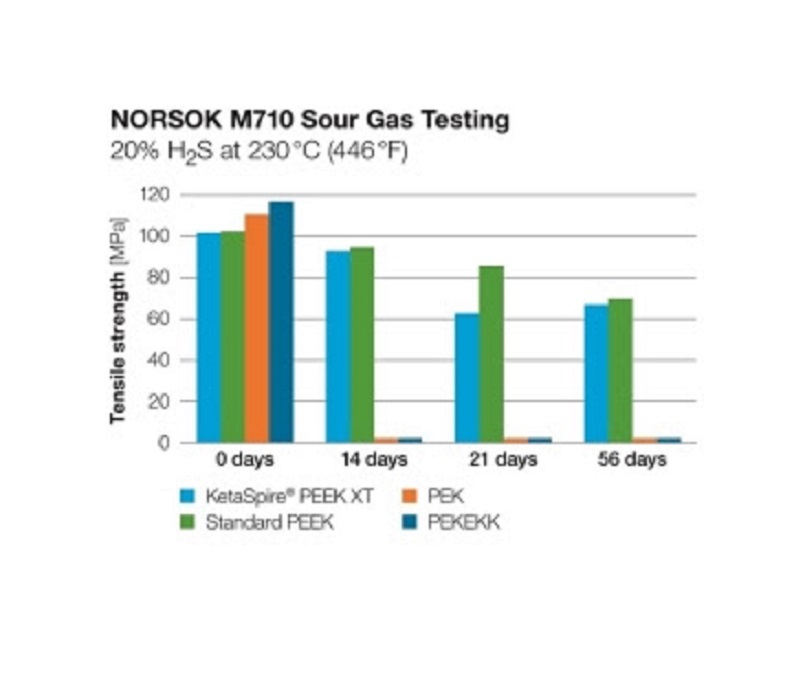
Solvay says that it has developed a new high temperature polyetheretherketone (PEEK), which it says has the chemical resistance of standard PEEK with higher strength and stiffness at elevated temperatures.
KetaSpire PEEK XT polymer has a glass transition temperature of 170°C (338°F), a 20°C (36°F) higher glass transition temperature than standard PEEK, Solvay says. It has a 400% higher tensile modulus and nearly 50% higher tensile strength at 160°C (320°F). It has improved electrical properties at 250°C (482°F) when compared to standard PEEK, increasing dielectric strength by 50% and volume resistivity.
‘We were able to boost thermal and mechanical performance while maintaining PEEK’s ether-to-ketone ratio, which accounts for the polymer’s superior chemical resistance,’ said Doug Brademeyer, polymers manager.
Since ‘true’ PEEK polymers have a 2:1 ether-to-ketone ratio, all other high-temperature polyketones, which include polyetherketone (PEK), polyetherketone ketone (PEKK), and polyetherketone etherketone ketone (PEKEKK), alter this ratio and therefore are not true PEEK polymers, the company says.
Solvay says that it is available globally in neat, 30% glass fiber, and 30% carbon fiber reinforced injection molding and extrusion grades, as well as in fine powder form for compression molding and as coarse powder for compounding. It is suitable for oil & gas, electrical/electronics, wire coatings, and automotive industries.
This story uses material from Solvay, with editorial changes made by Materials Today. The views expressed in this article do not necessarily represent those of Elsevier.




